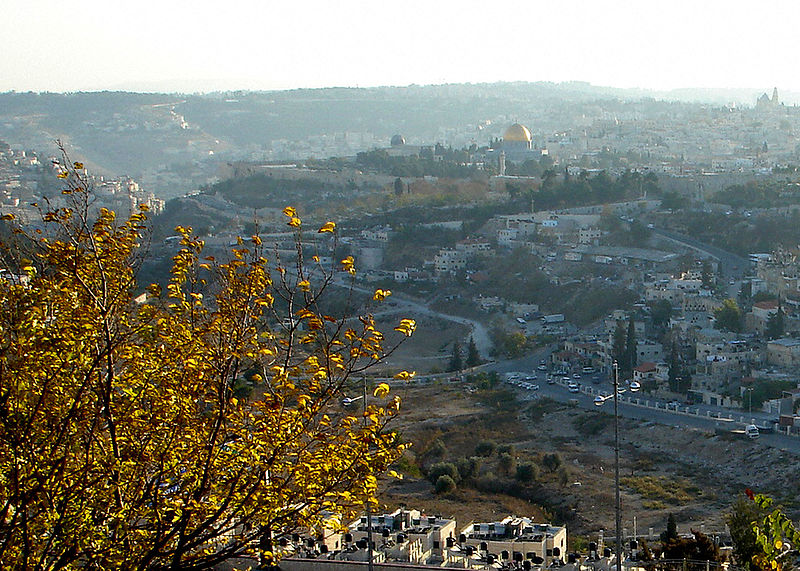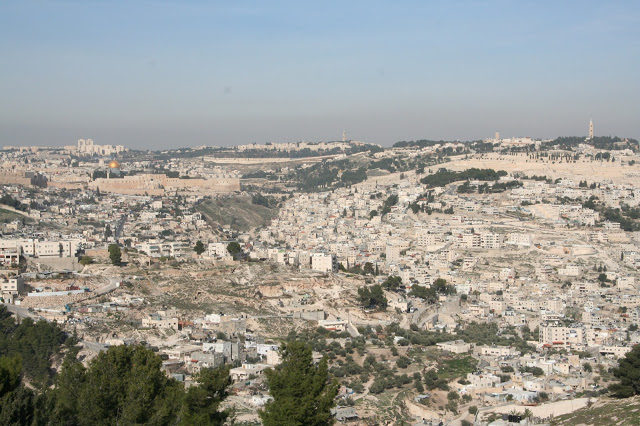Mount Scopus – Hebrew University
September 16th 2013
 Mount Scopus, known in Hebrew as Har HaTzofim, is located in northeast Jerusalem. Overlooking the Temple Mount, the new City and the Judean desert, Mount Scopus is famous today for being home to the humanities campus of the Hebrew University of Jerusalem.
Mount Scopus, known in Hebrew as Har HaTzofim, is located in northeast Jerusalem. Overlooking the Temple Mount, the new City and the Judean desert, Mount Scopus is famous today for being home to the humanities campus of the Hebrew University of Jerusalem.
Nearly 2,000 years ago, Mount Scopus served as the military headquarters of Titus, the Roman general who conducted the siege against Jerusalem and destroyed the Second Temple in the year 70.
By 1948, Mount Scopus was the site of both the Hebrew University of Jerusalem and Hadassah Hospital, the most advanced hospital of its time in the entire Middle East. During Israel’s War of Independence, Jordanian forces gained control of the single road leading to Mount Scopus, effectively cutting it off from the rest of the county. The isolation of Mount Scopus continued until Jerusalem was reunited in the Six Day War in 1967.
 Today, visitors here can tour the picturesque campus of Hebrew University. A highlight is the Hecht Synagogue, whose exterior resembles a fortress. Synagogue in the western Diaspora face east. However, due to its location on Mount Scopus, the Hecht Synagogue and Beit Midrash has a distinctive picture window, flanked by two Holy Arks, facing west, toward the Temple Mount.
Today, visitors here can tour the picturesque campus of Hebrew University. A highlight is the Hecht Synagogue, whose exterior resembles a fortress. Synagogue in the western Diaspora face east. However, due to its location on Mount Scopus, the Hecht Synagogue and Beit Midrash has a distinctive picture window, flanked by two Holy Arks, facing west, toward the Temple Mount.
Another highlight is the Hadassah Medical Center, founded as a teaching hospital by the Hadassah Women’s Organization in 1939. When access to Mount Scopus was lost in 1948, Hadassah opened a second location in the western Jerusalem neighborhood of Ein Kerem. The original Hadassah Medical Center on Mount Scopus was reopened in 1976 and is today a 350-bed community hospital where Arab and Jewish staff and patients interact in peaceful coexistence.
 While touring the area, make a brief stop at the Cave of Nicanor. The ancient burial cave, discovered during excavations, is believed to be the burial place of Nicano, who was, according to the ancient historian Josephus, a wealthy Jew from Egypt who donated the bronze doors of the Second Temple’s women’s section.
While touring the area, make a brief stop at the Cave of Nicanor. The ancient burial cave, discovered during excavations, is believed to be the burial place of Nicano, who was, according to the ancient historian Josephus, a wealthy Jew from Egypt who donated the bronze doors of the Second Temple’s women’s section.
Other highlights of the area include a branch of Brigham Young University, the Augusta Victoria Hospital and the British War Cemetery which serves as the burial place for English soldiers killed in the region during WWI.











